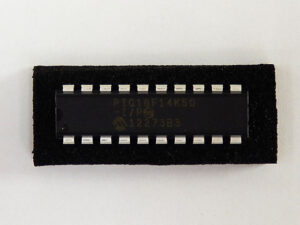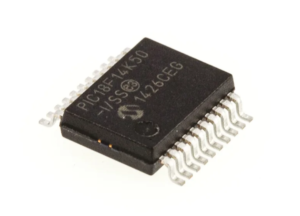 Microchip Processor PIC18F14K50 Flash Memory Breaking
Microchip Processor PIC18F14K50 Flash Memory Breaking
Microchip Processor PIC18F14K50 Flash Memory Breaking is a process to crack pic18f14k50 microcontroller fuse bit and then extract heximal from IC chip memory.

All of the devices in the PIC18(L)F1XK50 family incor- porate a range of features that can significantly reduce power consumption during operation. Key items include:
- Alternate Run Modes: By clocking the controller from the Timer1 source or the internal oscillator block, power consumption during code execution can be reduced by as much as 90%.
- Multiple Idle Modes: The controller can also run with its CPU core disabled but the peripherals still active. In these states, power consumption can be reduced even further, to as little as 4% of normal operation requirements.
- On-the-fly Mode Switching: The power- managed modes are invoked by user code during operation, allowing the user to incorporate power- saving ideas into their application’s software design.
- Low Consumption in Key Modules: The power requirements for both Timer1 and the Watchdog Timer are minimized. See Section 27.0 “Electrical Specifications” for values.

crackear la protección de la memoria del MCU del microchip PIC18F14K50 protegido y recuperar el contenido flash del microcontrolador PIC18F14K50 protegido y el software eeprom de la memoria, copiar datos heximales incorporados o código fuente binario del microprocesador PIC18F14K50 cifrado;
All of the devices in the PIC18(L)F1XK50 family offer ten different oscillator options, allowing users a wide range of choices in developing application hardware. These include:
- Four Crystal modes, using crystals or ceramic resonators
- External Clock modes, offering the option of using two pins (oscillator input and a divide-by-4 clock output) or one pin (oscillator input, with the second pin reassigned as general I/O)
- External RC Oscillator modes with the same pin options as the External Clock modes
- An internal oscillator block which contains a 16 MHz HFINTOSC oscillator and a 31 kHz LFINTOSC oscillator which together provide 8
- user selectable clock frequencies, from 31 kHz to 16 MHz. This option frees the two oscillator pins for use as additional general purpose I/O.

كسر حماية ذاكرة الشريحة الدقيقة PIC18F14K50 MCU واستعادة محتوى الفلاش المحمي PIC18F14K50 وبرنامج eeprom من الذاكرة، ونسخ البيانات السداسية المضمنة أو كود المصدر الثنائي من المعالج الدقيق المشفر PIC18F14K50؛
- A Phase Lock Loop (PLL) frequency multiplier, available to both the high-speed crystal and inter- nal oscillator modes, which allows clock speeds of up to 48 MHz. Used with the internal oscillator, the PLL gives users a complete selection of clock speeds, from 31 kHz to 32 MHz – all without using an external crystal or clock circuit which is a critical flaw for cracking pic18f4550 mcu memory.
Besides its availability as a clock source, the internal oscillator block provides a stable reference source that gives the family additional features for robust operation:
